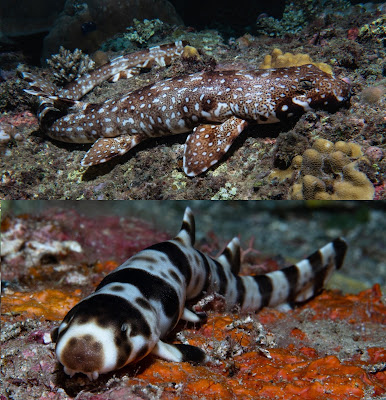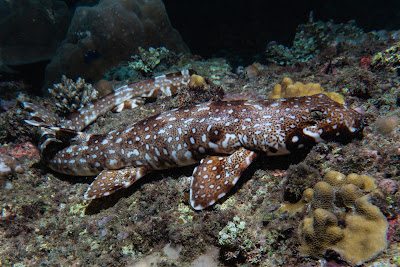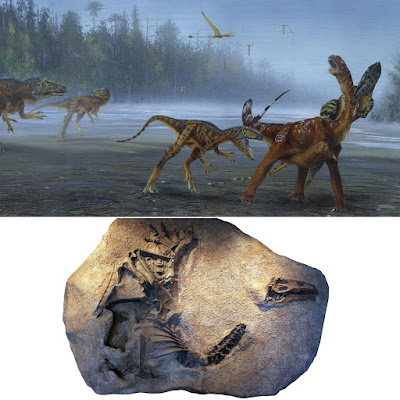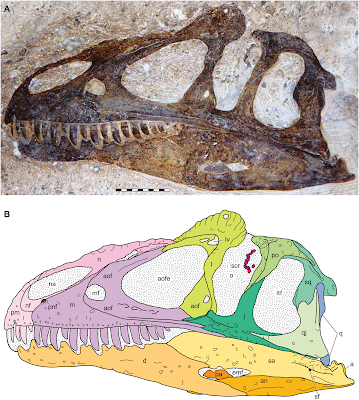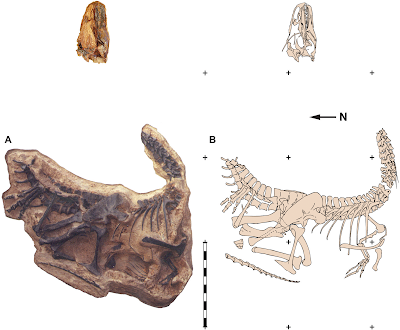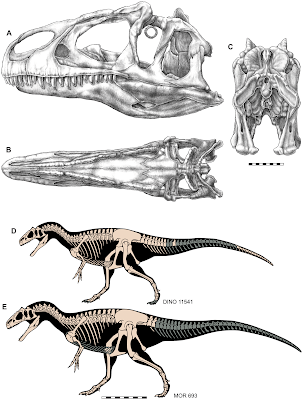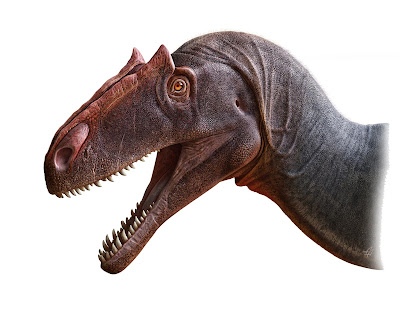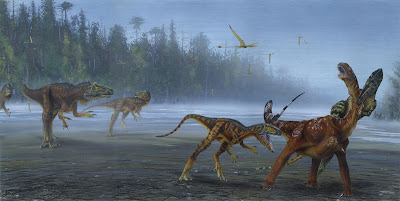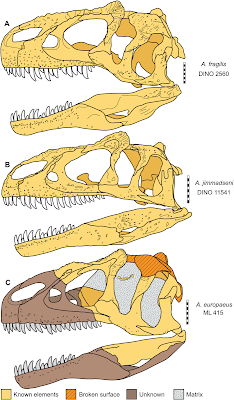[Most Recent Entries] [Calendar View]
Saturday, January 25th, 2020
| Time | Event | ||||||
| 7:02a | [Ichthyology • 2020] Walking, Swimming or Hitching A Ride? Phylogenetics and Biogeography of the Walking Shark Genus Hemiscyllium
Abstract It can be challenging to identify the forces that drive speciation in marine environments for organisms that are capable of widespread dispersal because their contemporary distributions often belie the historical processes that were responsible for their initial diversification. In this contribution we explore the likely sequence of events responsible for the radiation of walking sharks in the genus Hemiscyllium using a dated molecular phylogeny. The nine currently recognised species in the genus consist of small, benthic sharks that are restricted to the Indo-Australian Archipelago and show limited dispersal at both juvenile and adult stages. We discuss how major tectonic changes, sea level fluctuations and the unique biology of the species may have influenced speciation in the group, as well as the current distribution of the genus and each of its constituent species. Phylogeographic analysis of the genus combined with biogeographic reconstruction of the region shows a recent radiation during the Miocene and Pliocene, and supports a combination of vicariance and founder modes of speciation mediated by major tectonic, geological and oceanographic historical processes. keywords: Australia, eastern Indonesia, epaulette shark, New Guinea, radiation, Sahul region.
Christine L. Dudgeon, Shannon Corrigan, Lei Yang, Gerry R. Allen, Mark V. Erdmann, Fahmi, Hagi Y. Sugeha, William T. White and Gavin J. P. Naylor. 2020. Walking, Swimming or Hitching A Ride? Phylogenetics and Biogeography of the Walking Shark Genus Hemiscyllium. Marine and Freshwater Research. DOI: 10.1071/MF19163 Walking sharks discovered in the tropics tinyurl.com/vfz22wa via @uq_news Discovery afoot: New study cracks mystery of how ‘walking’ sharks split conservation.org/blog/discovery-afoot-ne Researchers discover 4 new walking sharks mnn.com/earth-matters/animals/videos/wal | ||||||
| 4:16p | [Paleontology • 2020] Allosaurus jimmadseni • A New Species of Theropod Dinosaur (Theropoda: Allosauroidea) from the lower part of the Morrison Formation (Upper Jurassic) of Western North America
Abstract Allosaurus is one of the best known theropod dinosaurs from the Jurassic and a crucial taxon in phylogenetic analyses. On the basis of an in-depth, firsthand study of the bulk of Allosaurus specimens housed in North American institutions, we describe here a new theropod dinosaur from the Upper Jurassic Morrison Formation of Western North America, Allosaurus jimmadseni sp. nov., based upon a remarkably complete articulated skeleton and skull and a second specimen with an articulated skull and associated skeleton. The present study also assigns several other specimens to this new species, Allosaurus jimmadseni, which is characterized by a number of autapomorphies present on the dermal skull roof and additional characters present in the postcrania. In particular, whereas the ventral margin of the jugal of Allosaurus fragilis has pronounced sigmoidal convexity, the ventral margin is virtually straight in Allosaurus jimmadseni. The paired nasals of Allosaurus jimmadseni possess bilateral, blade-like crests along the lateral margin, forming a pronounced nasolacrimal crest that is absent in Allosaurus fragilis. Systematic paleontology Dinosauria Owen, 1842; sensu Padian & May, 1993 Saurischia Seeley, 1887; sensu Gauthier, 1986 Theropoda Marsh, 1881; sensu Gauthier, 1986 Tetanurae Gauthier, 1986 Allosaurioidea Currie and Zhao, 1994; sensu Carrano, Benson & Sampson, 2012 Allosauria Paul, 1988 Allosauridae Marsh, 1878; sensu Sereno, 2005 Allosaurus Marsh, 1877 Allosaurus jimmadseni Chure and Loewen sp. nov. (previously inudum (Chure et al. 2006)) Etymology— In honor of the late James H. Madsen, Jr and in recognition of his outstanding contributions to our knowledge of Allosaurus through his herculean efforts of protecting, excavating, preparing, and curating of many thousands of Allosaurus bones from the Cleveland-Lloyd Dinosaur and his masterful monograph (Madsen, 1976) of that collection. Holotype locality—DINO 11541 was recovered from locality DNM 116, east of the enclosed Carnegie Quarry in the Utah part of Dinosaur National Monument. Exact locality data are on file at Dinosaur National Monument. Holotype horizon—DINO 11541 was recovered from the Salt Wash Member of the Upper Jurassic (Kimmeridgian) Morrison Formation. All referred specimens occur in the stratigraphically equivalent lower part of the Morrison Formation in Wyoming. Regional horizon—Allosaurus jimmadseni was found in the Salt Wash Member of the Morrison Formation in Utah and lower part of the Brushy Basin Member of the Morrison Formation in Wyoming and South Dakota. Allosaurus jimmadseni occurs below the “clay change” of Turner & Peterson (1999), except for at DMQ, which occurs only two m above the “clay change”. Diagnosis—Allosaurus jimmadseni is distinguished from other basal tetanurans by the following unique combination of characters: (1) in lateral view, a row of neurovascular foramina pierce the medioventral wall of the maxillary antorbital fossa; (2) straight posteroventral jugal ramus of maxilla where it articulates with jugal; (3) laterodorsal margin of nasal “pinched” into low crest continuous from premaxilla to lacrimal; (4) posterior portion of dorsal surface of nasal cup-shaped, producing a median peak in region of nasofrontal contact; (5) relatively taller lacrimal horns than in Allosaurus fragilis; (6) jugal with relatively straight ventral margin and straight-to-slightly-curved outline in dorsal view; a well-developed distinct antarticular, and (7) axial intercentrum is rotated dorsally and has a flared rim in lateral view.
Conclusions: Based on all known data for specimens of Allosaurus, the genus contains two valid species from the Morrison Formation of North America, Allosaurus fragilis and Allosaurus jimmadseni, which are distinct from Allosaurus europeaus (Fig. 16). The jugal, maxilla and nasal of the two taxa differ in multiple characters, including features associated both with signaling structures (nasolacrimal crest in Allosaurus jimmadseni; lacrimal horn of Allosaurus fragilis) and with craniofacial modifications that more likely reflect modification under the direction of natural selection (e.g., transverse expansion of the rear portion of the skull in Allosaurus fragilis; dorsal displacement of the maxillary tooth row relative to the jaw joint in Allosaurus fragilis). Using these characters, this study assigns several specimens to Allosaurus jimmadseni. In a subsequent publication we will review all named species of Allosaurus from North America in support of our view that there are only two valid species of Allosaurus in North America, Allosaurus fragilis and Allosaurus jimmadseni. Daniel J. Chure and Mark A. Loewen. 2020. Cranial Anatomy of Allosaurus jimmadseni, A New Species from the lower part of the Morrison Formation (Upper Jurassic) of Western North America. PeerJ. 8:e7803. DOI: 10.7717/peerj.7803 New species of Allosaurus discovered in Utah eurekalert.org/e/9ptg via @uofunews @EurekAlert Remarkable New Species of Meat-Eating Jurassic Dinosaur Discovered in Utah - scitechdaily.com/remarkable-new-species-o |
| << Previous Day |
2020/01/25 [Calendar] |
Next Day >> |
